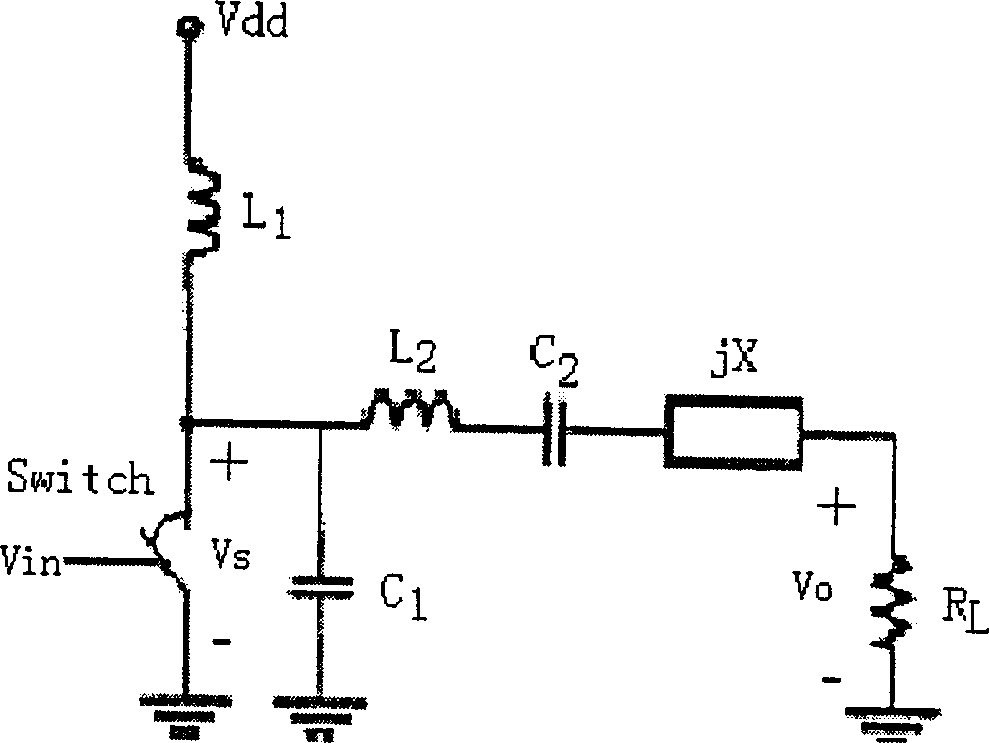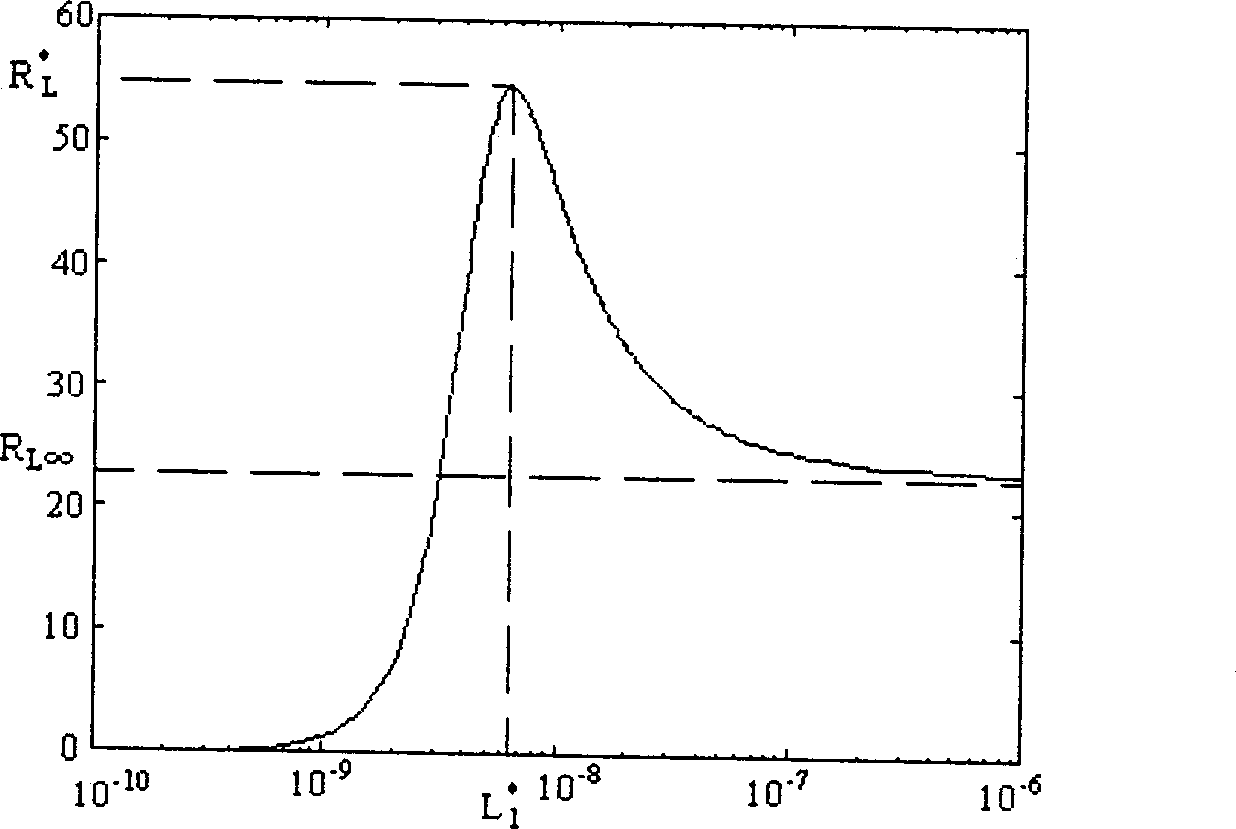High-efficient E type power amplifier optimized design method
A power amplifier and optimization design technology, applied in power amplifiers and other directions, can solve the problems of complicated design process, inability to guarantee performance meeting requirements, and energy consumption of matching network.
- Summary
- Abstract
- Description
- Claims
- Application Information
AI Technical Summary
Problems solved by technology
Method used
Image
Examples
Embodiment Construction
[0037] The embodiment of the high-efficiency Class E power amplifier optimal design method of the present invention is described as follows:
[0038] 1) Suppose the output power P out =150mW, power supply voltage V dd =1.5v, working frequency f=2.4GHz, output Q value
[0039] =10
[0040] 2) According to (Formula 6~8):
[0041] L 1 =9.91nH C 1 =2.22pF R L = 20.45 ohms
[0042] 3)L 2 =13.56nH, C 2 =0.324pF
[0043] 4) The theoretical calculation of X is relatively complicated. In the actual simulation process, another method can be used: gradually change the value of X until the waveform of each node meets the working conditions of class E PA, and then determine the value of X.
PUM
 Login to View More
Login to View More Abstract
Description
Claims
Application Information
 Login to View More
Login to View More - R&D
- Intellectual Property
- Life Sciences
- Materials
- Tech Scout
- Unparalleled Data Quality
- Higher Quality Content
- 60% Fewer Hallucinations
Browse by: Latest US Patents, China's latest patents, Technical Efficacy Thesaurus, Application Domain, Technology Topic, Popular Technical Reports.
© 2025 PatSnap. All rights reserved.Legal|Privacy policy|Modern Slavery Act Transparency Statement|Sitemap|About US| Contact US: help@patsnap.com



